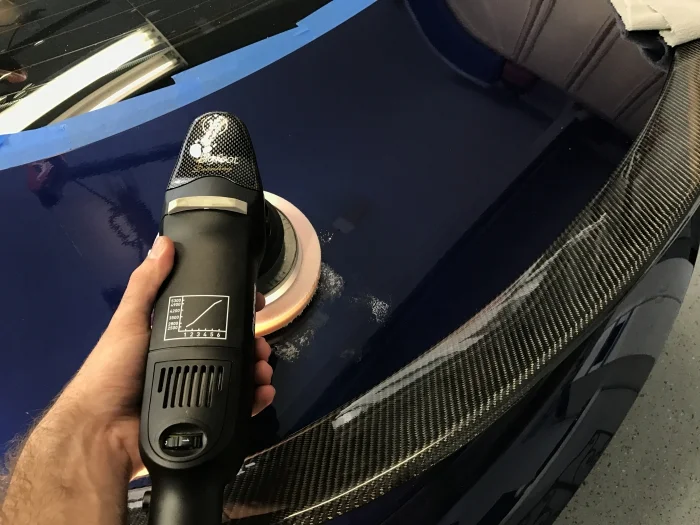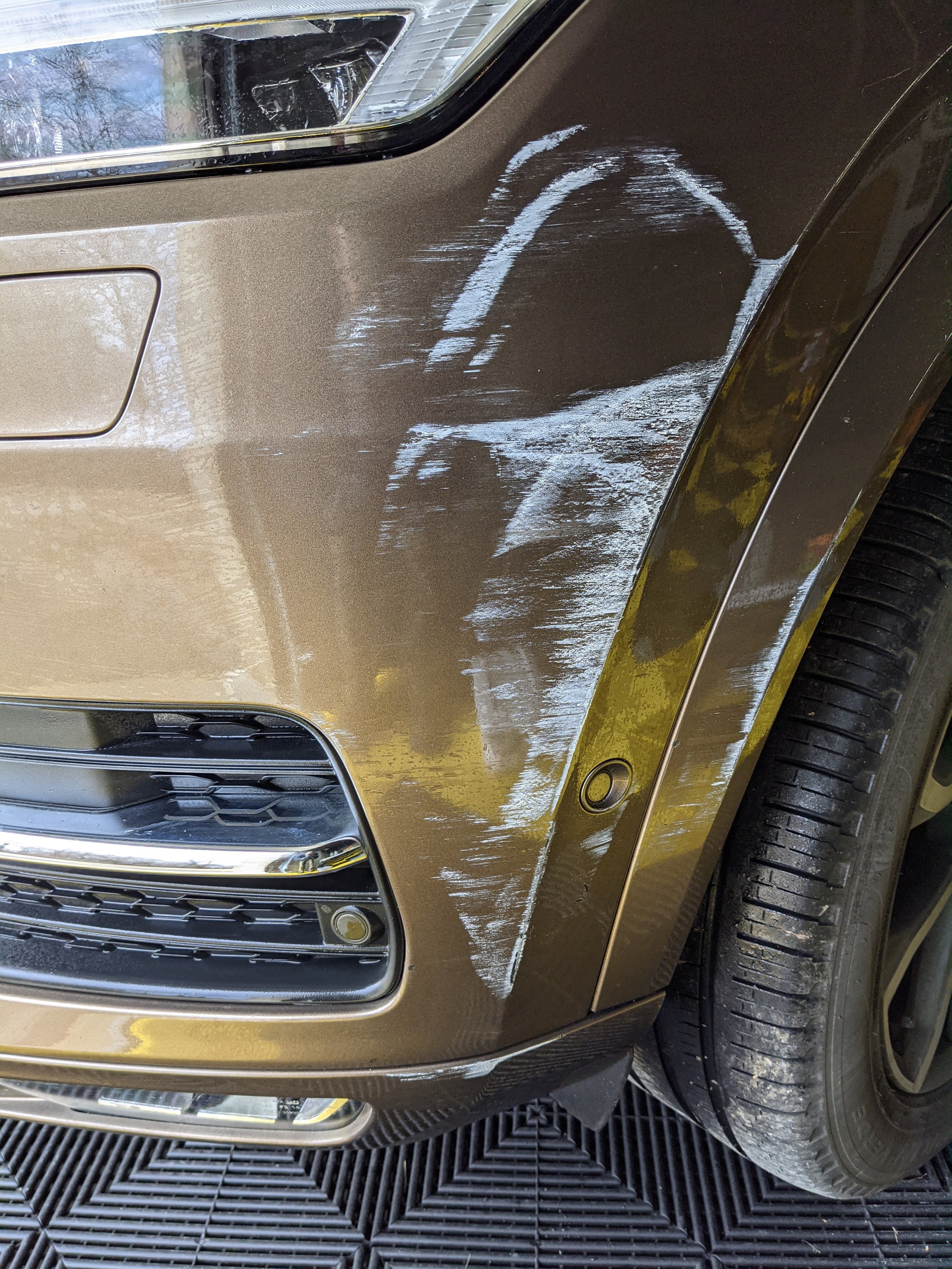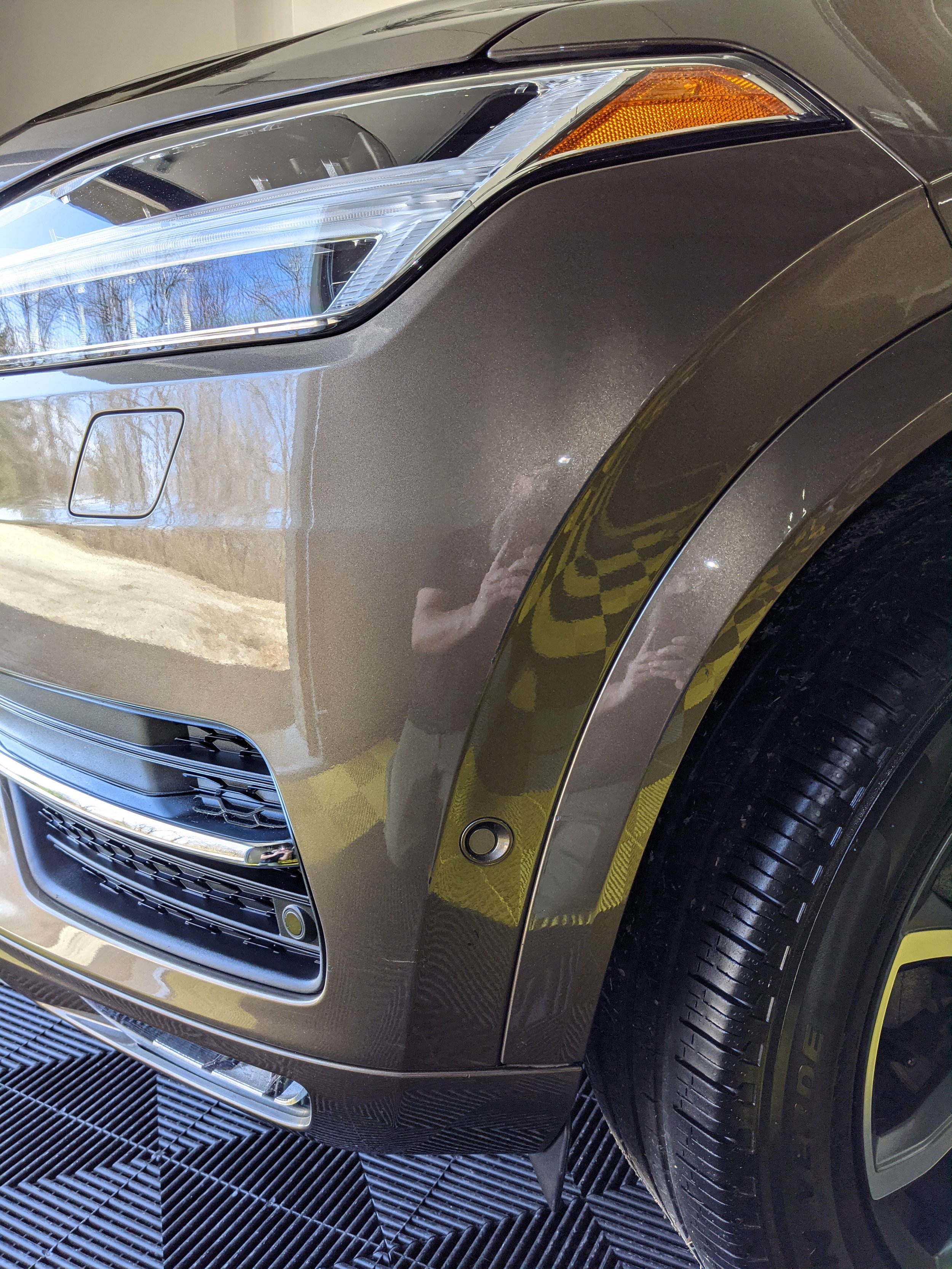Paint correction, Buffing & Polishing is a complex subject that has many different parts, but in an effort to simplify things and help you educate yourself, we have divided this page into many different subheadings to help you navigate to the particular area you are interested in. If you have any questions don't hesitate to subscribe , email, or call 636.231.5456 for the answer
WHAT IS POLISH?
Polishing is one of the major areas of the detailing industry where manufacturers and detail forums will confuse you if you aren't well versed, so allow us to help. To make things simple, polish refers to any product applied to the paint that contains abrasives. Some polishes are "heavier cutting" and some "lighter cutting," meaning some contain more aggressive abrasives than others in order to correct more or less severe defects in the paint. Normally polish is applied with a buffer, not by hand (though it is possible depending on the situation). Often times you will hear the word "compound" which is really the same thing as a polish, though when someone uses the word compound they are usually referring to a very heavy cutting product. The word "abrasives" really just means grit. The more abrasive, the more gritty. When we use the term "heavy cutting," that simply refers to a polish that is used for more severe scratches, swirls, etc... and "light cutting" meaning a polish that is used for less severe scratching and swirl marks. Polish can be bought in all sorts of configurations, retail, professional-grade, enthusiast-grade, and more. As a rule, most of the "polishes" that are available in retail stores do not actually contain abrasives. They are simply a "chemical" polishing formula, meaning they correct extremely light scratching through chemical means.
WHAT IS POLISHING?
To simplify, polishing a car simply means that polish is applied to the paint with a machine buffer (usually a rotary or dual action aka DA) in order to remove a certain percentage of the paint's defects. It is important to understand what exactly polishing does in order to make a more informed decision about whether to polish your car. Most detailers would lack the understanding and integrity to tell their clients this because polishing can be a high-dollar job, and they are simply after their customers’ money, but not here. Again, this is a bit of an oversimplification, but polishing is essentially the process of removing a certain level of the clear coat in order to improve or fix completely, minor scratches and defects. When you polish your vehicle, it is important to understand that at a root level, some of the clear coat is coming off. Now, when compared to something like wet sanding (click HERE or see wet sanding sub-heading) polishing removes a very minor amount of the clear coat, but this is the reason that polishing is not something that needs to be done on a regular basis. After all, there is only so much Clear Coat on a car.
Polishing is not used to repair deep scratches or serious paint defects, as mentioned in the previous paragraph, that must be fixed through a process called Wet Sanding, however light to medium scratches (surface scratches in the clear coat) can be dramatically improved and fixed through polishing.
WHY POLISH A CAR?
As cars are driven through the ‘jungle’ that we call the road, they build up scratches, chips, and all kinds of defects in the paint. Even washing a car is potentially dangerous if not done correctly, as wash scratch or swirl marks may appear. Most of these defects (scratches, swirls, etc...) exist in the paint’s clear coat and (hopefully), not in the actual paint base coat. Some will be deeper and some will be more surfaced, so polishing essentially removes these defects, and restores the car paint to its "like-new" or even "showroom" condition.
ONE-STEP VS TWO-STEP POLISH
This topic is actually rather self-explanatory. As we discussed before, there are different degrees of aggressiveness in different types of polish. If a vehicle needs nothing more than a one-step polish, that means that literally one round of polish will be applied to the whole vehicle. This is reserved for paint that is not heavily damaged and does not have many defects. A one-step polish will be on the less aggressive side because a heavy cutting polish is not necessary to remove minor scratches.
A two-step polish is exactly what it sounds like. A vehicle that has heavier scratching and swirling will need something more than a simple one-step polish. First, the vehicle is polished completely with a heavy cutting, aggressive polish. Secondly (or second step) a final round of a less aggressive polish is applied to fix any final minor scratches and bring out the maximum showroom car shine. Some situations call for a Third Step, which would be a three-step polishing job, which you can probably deduce what that is for yourself.
LOW-QUALITY POLISHING
It is fairly easy to tell when a low budget detailer has polished a car, here are some obvious signs:
#1) They don't take the time to tape off the character lines of the vehicle. Character lines are raised areas, seams, emblems, rubber seals around door jams, plastic trim, etc.
#2) When they have finished, you may find leftover polish is crammed in the seams of the doors, emblems, and crevices (which we then have to come and detail out the correct way).
#3) They rush, and therefore lack the self-discipline to correct or polish the paint the way you are paying them to do it! Polishing takes time, there's just no way around it.
This is another area where Revive Auto Detailing & Paint Correction stands out. Here, taking the necessary time to detail a vehicle correctly is our first priority.
Spider Webs & SWIRL MARKS
“Spider webs” are one of the main issues (if not the main issue) that require a person to polish a vehicle. Spider webbing can come from a variety of different sources, washing a car (also called wash scratch), automatic car washes that aren’t touch-less (while convenient, they wreak havoc on your vehicle’s paint), touching or leaning on the car, or just simply driving the car! We have attached a picture of paint with some spider webbing & swirl marks to illustrate what we’re talking about.
Spider Webs
Though spider webs look as if they are circular, they are not. Simply put, spider webs are nothing more than thousands of random little scratches, going in every direction, but when the sun shines on the paint, they appear circular (or like a SPIDER WEB) because of the sun's shape. You'll notice that they can only actually be seen in the sun or bright lights, if your car is parked in the shade it will look like they are not there.
SWIRL MARKS
Swirl Marks on the other hand are caused almost always by improper compounding/polishing techniques. For the most part, Swirl Marks can be removed through compounding/polishing. Swirl mark scratching tends to be more surfaced than specific isolated scratches or spider webbing (but not always). Below is before and after pictures of polished cars that had some swirl marks, as well as damage other detailers, did to their customer’s car:
Swirl Marks aka ‘Buffer Trails’
On the left is an example of an inexperienced detailer trying to polish out spider web scratch and left behind these back and fourth lines, what we also call ‘Buffer Trails’. We were called to to a customers home to fix what their previous detailer did to their black paint in an attempt to remove spider web scratches. The right side of the hood is where we polished out the swirl marks/buffer trails the previous detailer left behind.
50/50 Removal of Spider Web Scratch (Right Side Compounded and Polished)
TRANSFER
Sometimes what appears to as scratches is actually something called, ‘Car Transfer’ or ‘Paint Transfer’. Paint transfer simply put, is paint or residue that has transferred from whatever the vehicle brushed up against (or brushed up against your vehicle). For example, if a car brushes up against a white garage door, there may very well be some scratching, but more than likely there will also be what appears to be white scratches. These "scratches" may not be scratches at all, they may be nothing more than the paint from the garage "transferred" to the vehicle. Transfer can be difficult to remove if you don't have the right products. With the right products, it may not be a big deal at all. The transfer may also hide scratches, in other words, there may be a lot of scratching that cannot be seen until the paint transfer is removed. Once removed the scratches become obvious and can be seen and taken care of. It is important to always take necessary steps to remove paint transfer before polishing or wet sanding a specific area because it's not always clear if something is a scratch or if it is paint transfer.
Below is a Volvo XC90 with Paint Transfer that was Succesfully Removed







